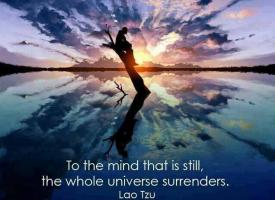Mindfulness and Calming the Mind

Mindfulness is about training the Mind (attention and awareness) and the Body (brain-Neural Pathways) to percieve and respond to life in a way that brings about more calm and peacefulness.
Mindlessness on the other hand, means evaluating new situations with your pre-existing beliefs or conditioning created in the past. Due to the increased strength of these neural pathways, you are likely to have the same reaction next time, reinforcing this behaviour. So in fact you are living in the PAST, often having the same reaction over and over again.
Hence… the definition of Insanity is thinking, feeling and doing the same thing over and over again and expecting something to change.
History
Mindfulness dates back 2500 years ago, to the days of the Buddha. It is based on an ancient meditation technique called Vipassna, which means, “to see things as they really are.”
The monks believed that the contributing factors to human suffering were:
- Craving, because if we crave for something and we don’t get it, we suffer.
- Aversion, because if we try to avoid something and we get it, we suffer.
It becomes important to remember that experiencing pleasure or pain (physical) is inevitable in life, and suffering (psychological) as a result of these experiences is optional.
We are always trying to move towards pleasure and away from pain. With Mindfulness we are becoming aware or conscious of all and choosing on purpose not to react to either the pleasure or the pain. As we practice mindfulness in all its forms, certain pathways of the brain weaken and the sensory areas of the brain strengthen, giving us greater calm and the ability to manage our mind, therefore our emotional states.
Two main types of Mindfulness Practice
- Passive Practice is known as a sitting practice and is done alone or in groups, purposely practicing quiet internal observation of thoughts and body sensations and choosing purposely not to react to them.
- Active Practice is practicing mindfulness in everyday life, as you are walking, talking, driving, exercising etc. This is becoming more aware of your actual experiences in everyday life, keeping you in the present moment and therefore out of the past or future. This increases your ability to find more joy and contentment in everyday life.
Practice Time!
- During the next week, I would like you to eat at least one meal per day, quietly to yourself. Chew your food slowly and well and really notice your five senses as you do this.
- When you shower, start to be present, rather than thinking. Once again, indulge your senses. Really notice the water on your skin and how the soap feels.
Stay tuned next week as I start to expand on Mindfulness Practice and ways of calming the mind.
Jaye 




